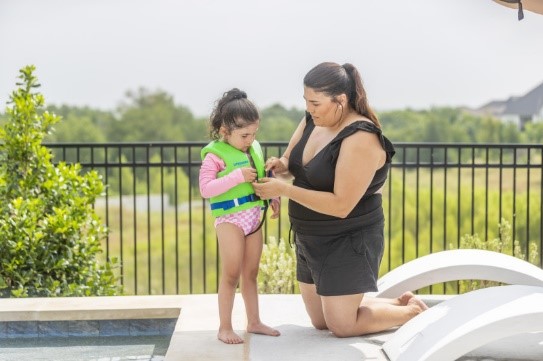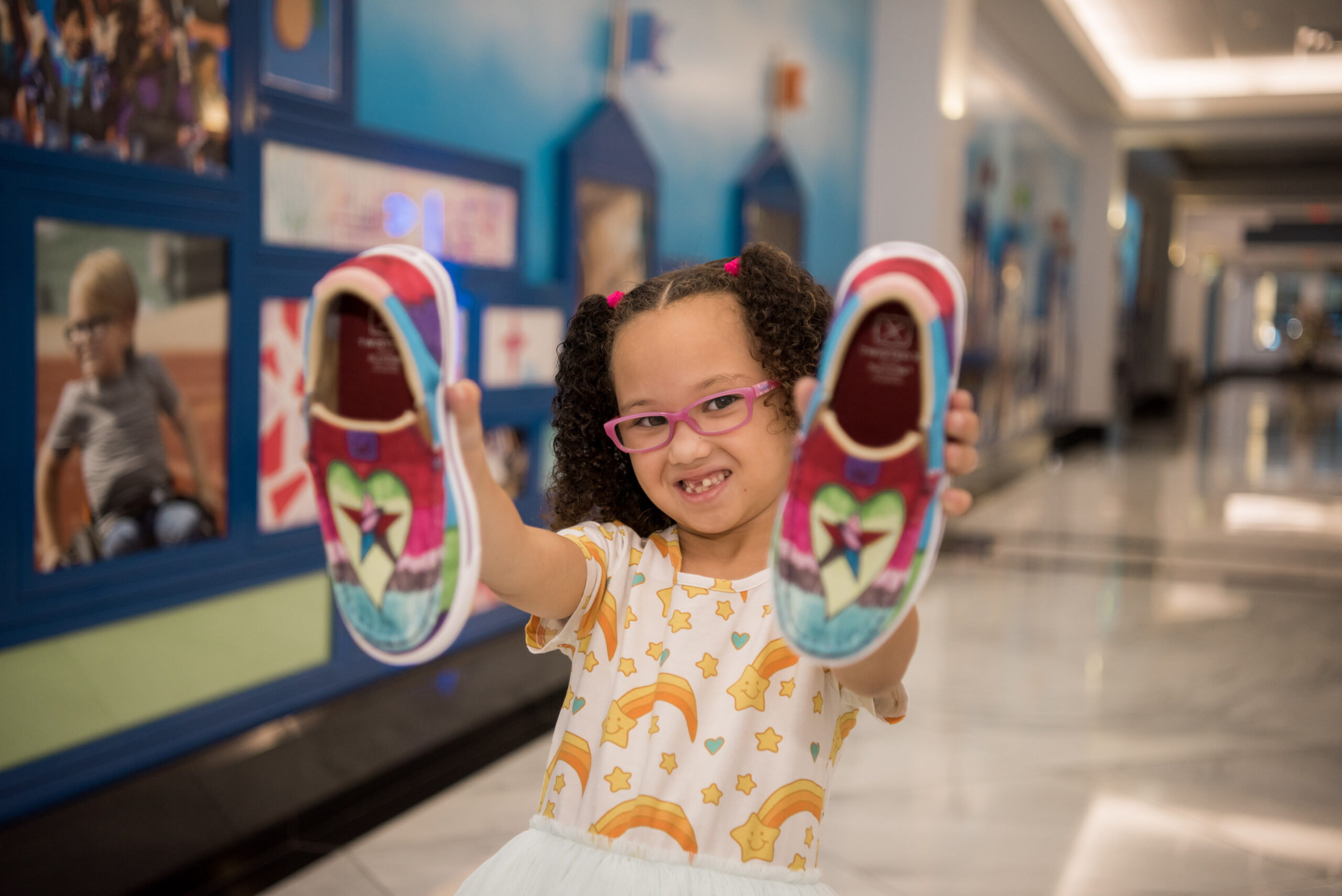A Breath of Fresh Air: Cook Children’s Healthy Homes Program Transforms Lives of Children with Asthma
An assessment with Cook Children’s Healthy Homes Asthma Program begins standard enough. Community health workers (CHW), like Clerbela Valcourt, talk to families over the phone or visit them in person about their child’s asthma: what are their symptoms, when do those symptoms get worse, what medications are they using?
But then the assessment gets much more specific: do they know how to clean the A/C vents? How often do they dust the ceiling fans? Do they have any leaks under the sinks?
Asthma can have a wide variety of triggers, and people don’t always know how to look for them, let alone manage them. Curtains, for example, gather more dust than people realize. Clothes that kids wear outside track pollen into the house. A leak in the fridge can cause mildew. All of those sources and more can make a child’s asthma worse.
“Most families don’t even know what air duct cleaning is, or have never had that done, and that’s very important for a child with asthma,” Valcourt said. “Lots of parents say after they have that, they see a great improvement in their child’s asthma symptoms.”
What is the Healthy Homes Asthma Program?
The Cook Children’s Healthy Homes Asthma Program, created in 2016, has helped thousands of families across the eight-county service area identify and minimize asthma triggers in the home. The goal is to manage the source of kids’ asthma — like dust, dander or mold — and keep families from getting to the point where they need emergency care. 
Weather changes, pollen and dust are the most common triggers the team identifies. The team will walk families through specific areas in the home that can become hot spots (like bedding, window blinds and ceiling fans) and how to manage them. Marquietta Jones, the program coordinator who has been a CHW for six years, is a big proponent of getting the kids involved in that cleaning process.
The program is not just a conversation about cleaning, though. Healthy Homes provides education, coordination with community services and long-term planning to empower families to tackle their child’s asthma head-on.
“Our families not only get the education, but they get it while walking hand-in-hand with the community health worker — someone who is by their side to help them parse through the tons of information we’re inundated with and figure out which pieces are most applicable to them, putting it into practice.” Courtney Barnard, director of the Healthy Homes Program, said. “That’s where we see the success: in that the families walk away not only knowing more, but feeling confident that they can continue this beyond their time in the program.”
The program begins when CHWs reach out to families who have had two or more emergency department visits or three or more urgent care visits in the past 12 months for asthma. The staff explain the program and schedule a home assessment. During the over-the-phone or in-home assessment, the CHW reviews the child’s asthma history and explores triggers that may be present in the home environment.
Over three months, families get free one-on-one support by a CHW to identify home environmental triggers, secure supplies and services and, if needed, obtain referrals to social and medical supports. 
Families receive supplies like air purifiers, vacuum cleaners, mattress encasements, cleaning supplies and more. The team provides air duct cleaning, pest control and carpet cleaning free of charge for families. Through one-on-one coaching, families can talk through questions they should ask their doctor, how their child can be active safely and medication needs.
One popular tool the team created is the action plan binder, which families say they use for years after leaving the program, said RoseMary Ragon, another CHW with Healthy Homes. The binder includes all the child’s medical information and a plan that lays out what to do for each stage of asthma symptoms.
The team provides referrals to local social services, as well. Cristina Cantu, another CHW with Healthy Homes, said the team listens to the needs of the families that go beyond managing their asthma.
“Our goal is to improve the overall health and wellbeing of the child by helping families address all the other needs they may have, like medical and dental providers, food, utility assistance, and counseling,” Cantu said.
‘’It’s About Having the Education”
Since 2018, Healthy Homes has enrolled 700 kids in the program and another 715 children who did not qualify for the full program have been provided with education and follow-up services.
The data behind Healthy Homes is evidence of its success: families in the program saw an 85% decline in emergency room visits in the 12 months after enrollment. But the full impact of the program is even more apparent in family’s survey responses, which usually mention their CHW by name.
One person wrote that their son was in the hospital at least every three months, and sometimes four times a month, for asthma attacks. But the CHW on their case helped them clean the air ducts, gave them an air purifier and cleaning soap that helped control his asthma.
“[My CHW] and this program was such a blessing to my family…” they wrote. “My son hasn’t been to the hospital since with asthma related problems. Thank you sooooo much for the help and guidance.”
“Mold and dust removal was the best thing,” another participant wrote in their survey. “[My CHW] was such a big help and she really went above and beyond informing me of all the asthma triggers. She is very well informed and that is what really helps, having the right people that want to help and not just doing a job. Thank you for all your staff members.”  Jones said she loves those “aha” moments where a family discovers something simple, like changing a child’s clothes after they play outside, that makes a huge difference for their child’s asthma.
Jones said she loves those “aha” moments where a family discovers something simple, like changing a child’s clothes after they play outside, that makes a huge difference for their child’s asthma.
“It’s about having the education, if you don’t know, you don’t know. It’s not a curable disease, but it’s manageable,” Jones said. “It can be something simple and they’re like ‘I didn’t think about that.’”
Jones, Ragon, Cantu and Valcourt all emphasized the bond they form with their families, and the glow they feel when families become empowered in tackling their child’s asthma.
“When your child has asthma, you have that overwhelming feeling, like ‘oh my gosh, what do I do?” Valcourt said. “To me, the biggest thing I take away from it is knowing that after they leave the program, most of the families say, now I can manage the treatment in the home.”
For families who don’t qualify for the full program, the program provides education that can be just as life changing. The website has videos on common asthma triggers and medication methods, as well as downloadable booklets available in nine languages. The CHWs walk families through all of that information.
Ragon said families have revisited the videos for years because of how useful they are.
“I get a lot of feedback on that video; Families who have had a child with asthma for years will say, ‘I learned new things from this,’ and keep referring back to it, just like that (Action Plan) binder,” she said. “And they can always give us a call.”
Next Steps
The Healthy Homes Program is also looking beyond care in family’s homes. The goal is to educate school nurses, P.E. teachers, coaches, teachers and others about asthma and how to keep kids safe while being physically active.
“Asthma is not a death sentence, there is so much people can do to help,” Barnard said. “We want parents to feel empowered that they have a lot of options that they can do to help their child. And we want to make sure they know what those are and how to do it.”
Overall, the team hopes people leave the program with an understanding of managing asthma triggers, a good plan with their physician, an Asthma Action Plan and, most importantly, knowledge and confidence.
Cook Children’s Center for Community Health


